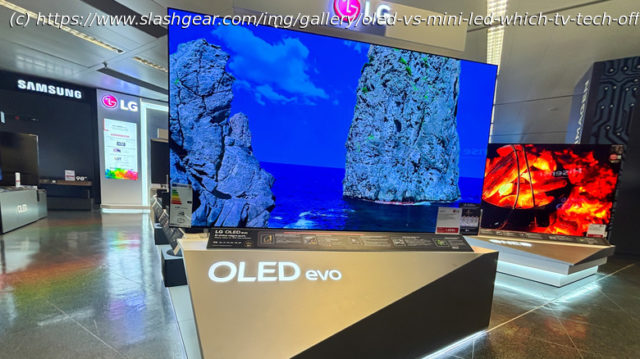Whether Mini LED or OLED displays are better depends on your use case. Both offer excellent image quality, but Mini LED TVs are better for intense highlights.
OLED (Organic Light Emitting Diode) and Mini LED represent two of the highest-end display technologies available today, but they work in fundamentally different ways. OLED panels are self-emissive; each pixel generates its own light and can be completely turned off. This gives OLED TVs perfect black levels, an «infinite» contrast ratio, and excellent color accuracy across the screen. Because there’s no backlight, OLED is free of blooming or haloing around bright objects, which is common in backlit displays. Mini LED TVs, by contrast, are LCD panels lit by thousands of tiny LEDs grouped into local dimming zones. This design allows for much greater peak brightness than OLED, making Mini LED better suited for well-lit rooms and daytime viewing.
Mini LED’s local dimming significantly improves black levels over standard LED TVs, but because the dimming is zone-based and not pixel-precise, it can’t match OLED’s absolute black depth. OLED’s strengths shine in dark environments and for content with heavy shadow detail, while Mini LED’s advantage comes in scenes requiring intense highlights or when combating glare. The choice comes down to your environment: OLED dominates for cinematic, low-light viewing, whereas Mini LED delivers the punch needed in bright, light-filled rooms.






